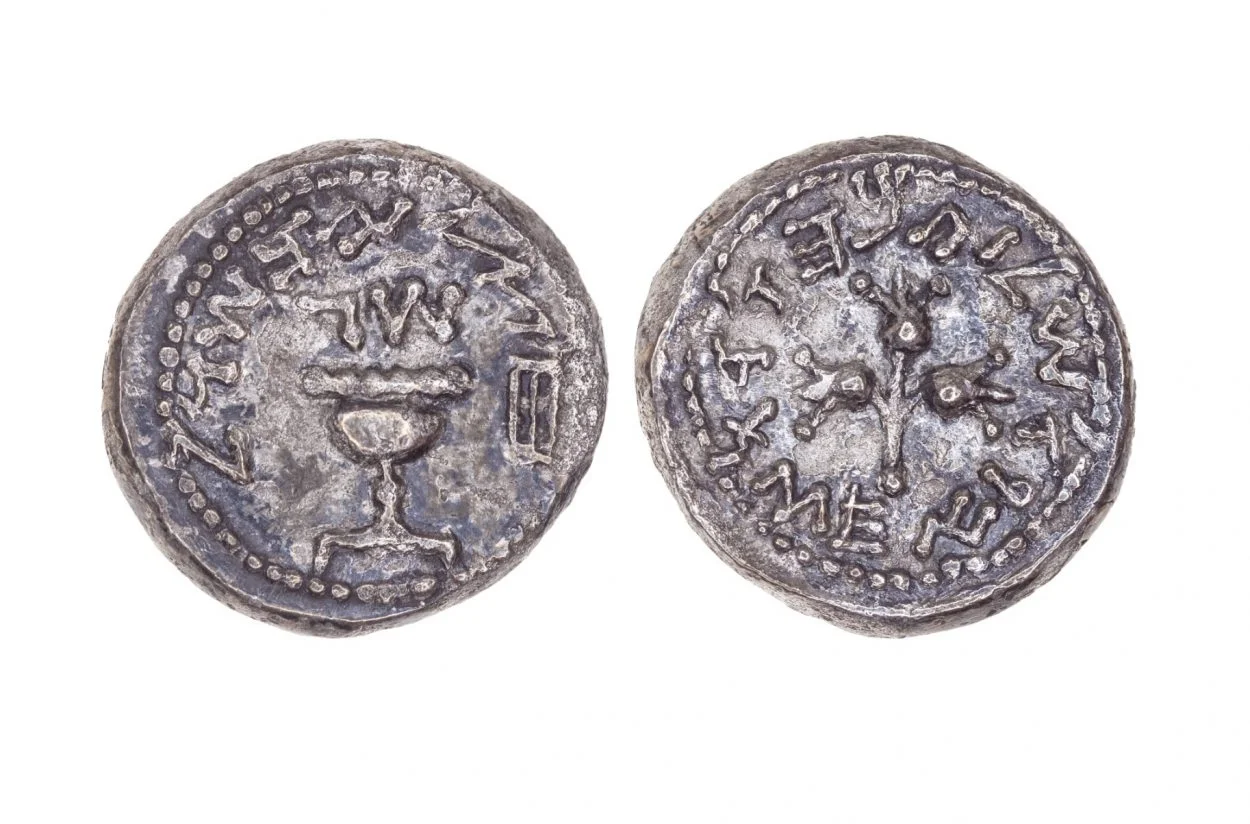Archaeologists from the Hebrew University have uncovered a rare half-shekel coin from the Great Revolt period.
The Great Revolt was the first of several uprisings by the Jewish population of Judea against the Roman Empire.
The revolt was in response to increasing religious tensions and high taxation by the Romans, leading to the plundering of the Second Temple and the arrest of senior Jewish political and religious figures. A wide-scale rebellion overrun the Roman garrison of Judea, and fleeing for this life, the abandonment of Jerusalem by the pro-Roman King Herod Agrippa II.
The Romans mobilised four Legions (supported by forces of Agrippa) to subdue the rebellion and punish the Jewish people as an example to others. The legions reached Jerusalem in AD 70, placing the city under siege for four months.
After several battles, the entire city and the Second Temple was destroyed, with contemporary historian Titus Flavius Josephus stating: “Jerusalem … was so thoroughly razed to the ground by those that demolished it to its foundations, that nothing was left that could ever persuade visitors that it had once been a place of habitation.”
Archaeologists from the Hebrew University have been excavating in the Ophel area south of the Temple Mount, where they discovered an assemblage of coins within the destruction layer from the period of the Great Revolt.
Most of the coins are made from bronze, but one particular silver coin is an extremely rare half-shekel from AD 69/70, one of only three examples ever found since recorded excavations in Jerusalem.
At the time of the revolt, the Jewish inhabitants of Jerusalem minted bronze and silver coins. Most of the silver coins featured a goblet on one side, with ancient Hebrew script above it noting the year of the Revolt. Depending on its denomination, the coins also included an inscription around the border noting either, “Israel Shekel,” “Half-Shekel,” or “Quarter-Shekel.” The other side of these coins showcased a branch with three pomegranates, surrounded by an inscription in ancient Hebrew script, “Holy Jerusalem.”
Prior to the revolt, coin production during the Roman period were exclusively minted by the Romans. Minting indigenous coins was a politely statement and an expression of national liberation from Roman rule.
According to the researchers, half-shekel coins (which had an average weight of 7 grams) were also used to pay the “half-shekel” tax to the Temple, contributed annually by every Jewish adult male to help cover the costs of worship.
Dr. Farhi explained, “Until the revolt, it was customary to pay the half-shekel tax using good-quality silver coins minted in Tyre in Lebanon, known as ‘Tyrean shekels’ or ‘Tyrean half-shekels.’ These coins held the image of Herakles-Melqart, the principal deity of Tyre, and on the reverse they featured an eagle surrounded by a Greek inscription, ‘Tyre the holy and city of refuge.’ Thus, the silver coins produced by the rebels were intended to also serve as a replacement for the Tyrean coins, by using more appropriate inscriptions and replacing images (forbidden by the Second Commandment) with symbols.
The silver coins from the Great Revolt were the first and the last in ancient times to bear the title ‘shekel.’ The next time this name was used was in 1980, on Israeli Shekel coins produced by the Bank of Israel.”
The Hebrew University of Jerusalem
Header Image Credit : Tal Rogovski





